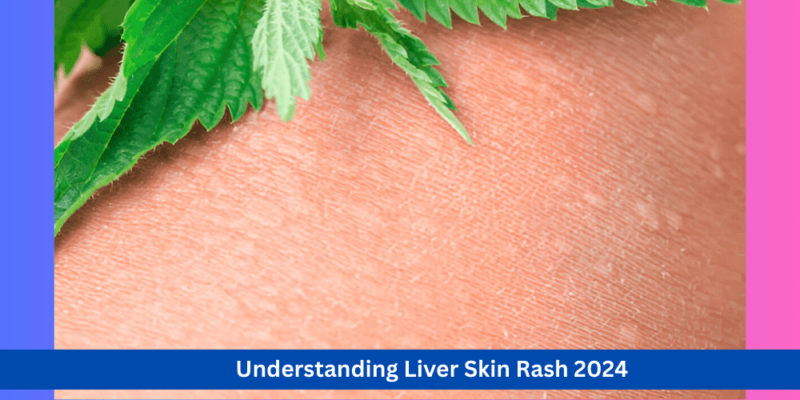
Understanding Liver Skin Rash 2024

Understanding Liver Skin Rash 2024
A liver skin may be concerning since it suggests that there may be problems with liver function. The liver can show symptoms of distress through the skin because it is an organ that is essential for metabolism and detoxification. It is crucial to identify the signs and comprehend the underlying causes of a liver skin rash in order to seek medical attention as soon as possible and to preserve general health.
What is a Liver Skin Rash?
A liver skin rash is an abnormal patch that usually results from liver dysfunction. The liver’s inability to sufficiently filter toxins from the blood can lead to the build-up of toxins in the body. The skin, as an excretory organ, tries to eliminate these toxins, which can cause rashes or other dermatological symptoms.
Causes of Skin Rash
Liver Disease
liver skin rash is primarily caused by liver diseases, including fatty liver disease, cirrhosis, and hepatitis. These illnesses affect how well the liver functions, which leads to an accumulation of bile salts and toxins that can irritate the skin.
Cholestasis
A condition known as cholestasis causes the flow of bile to become obstructed, which causes bile acids to build up in the blood. This may result in severe itching and the appearance of a liver skin rash.
Autoimmune Disorders
Skin rashes on the liver can also be a symptom of autoimmune liver diseases, such as autoimmune hepatitis and primary biliary cholangitis (PBC). When the immune system unintentionally targets liver cells, inflammation and decreased liver function result.
Symptoms Accompanying Liver Skin Rash
- Itching: Persistent itching, either localised or widespread, is one of the most typical symptoms linked to liver skin rash.
- Jaundice: Rashes related to the liver are frequently accompanied by jaundice, or yellowing of the skin and eyes.
- Spider Angiomas: These are tiny blood vessels that resemble spiders and are usually visible beneath the skin in people with liver disease.
- Red Palms: This condition, also called palmar erythema, is characterised by redness in the palms and may be associated with liver problems.
Liver Skin Rash for Diagnosis and Treatment
Diagnosis
A comprehensive approach is required to diagnose a liver skin rash. To identify the underlying cause, imaging tests such as MRIs and ultrasounds, as well as occasionally a liver biopsy, are required in addition to blood tests to assess liver function.
Treatment
The goal of treating a liver skin is to deal with the underlying cause. Skin symptoms can be reduced, for example, by treating liver diseases with drugs, altering one’s lifestyle, or, in extreme situations, a liver transplant. Topical medications may also be administered to control irritation and itching.
Liver Skin Rash for Preventive Measures
Healthy Diet
In addition to promoting liver health, a balanced diet full of fruits, vegetables, and lean proteins can delay the development of skin conditions linked to the liver.
Avoiding Alcohol and Toxins
Reducing alcohol intake and staying away from dangerous chemicals can help lower the chance of liver damage and the rashes that follow.
Regular Check-ups
Regular physical examinations and liver function tests can aid in the early detection of liver issues, averting consequences such as liver skin rash.
Conclusion
One of the most important markers of possible liver dysfunction is a liver skin. It is essential to comprehend this condition’s causes, symptoms, and available treatments in order to effectively manage it. One can make sure their liver stays healthy and avoid liver-related skin rashes by leading a healthy lifestyle and promptly seeking medical advice. It’s important to remember that your skin reflects the health of your liver, so maintaining liver health is essential for overall wellbeing.
Read Out Other Blog Post : Laser Face Resurfacing Price: What to Expect in 2024














